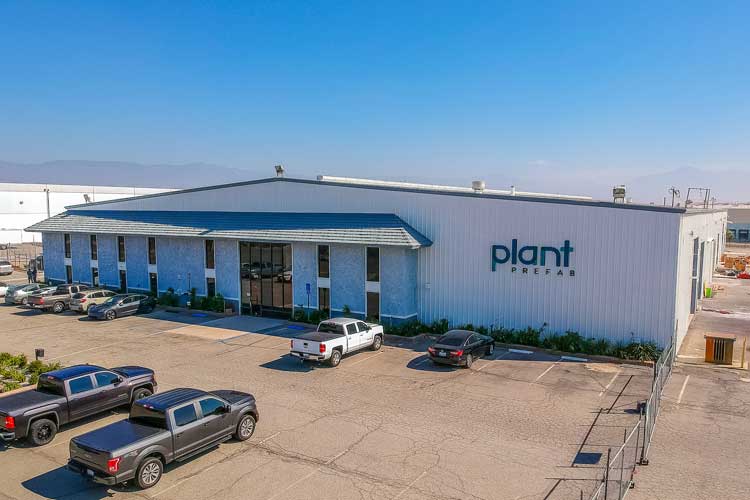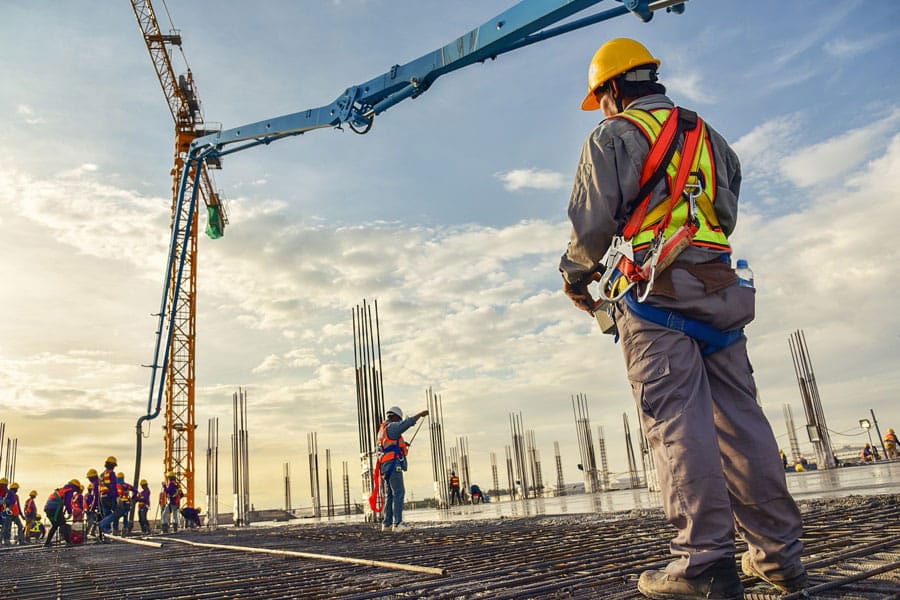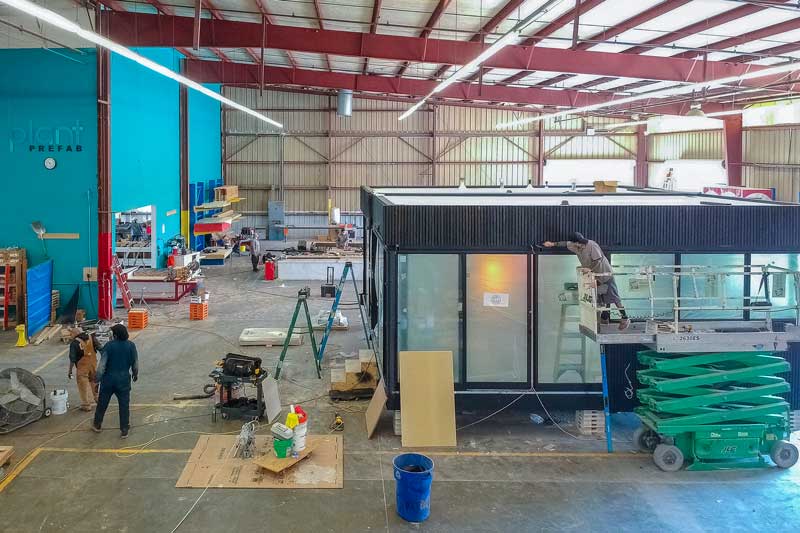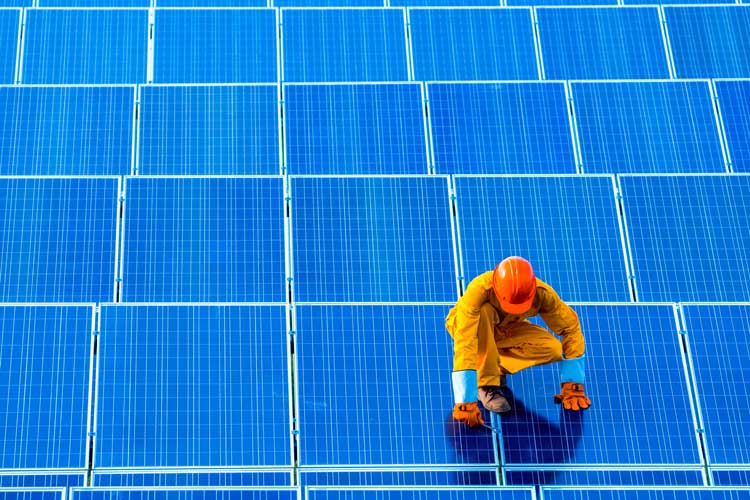When you think modular construction, you probably don’t think of custom homes with high-end finishes. And you probably don’t think of startup culture or a focus on sustainability, either. But that’s just what Plant Prefab is trying to change. Located about an hour east of Los Angeles in Rialto, California, in a 62,000-square-foot facility, Plant Prefab is a modular home startup that builds the kind of homes you’d see in a design magazine.
Prefab for the high-end market
“We’re focused on the custom home market,” said CEO Steve Glenn. “Unlike most prefab companies, we’re not trying to build the same thing again, and again.” Glenn wanted to be an architect growing up. When he realized he didn’t have the talent for drawing, he turned to tech, which is where he spent most of his career. He sees his latest gig, leading a promising start-up that just received an investment from Amazon (the retail giant’s first foray into the housing market), as a kind of circuitous fulfillment of childhood dreams. Glenn views smarter building as a way to improve lives and the company’s bottom line.
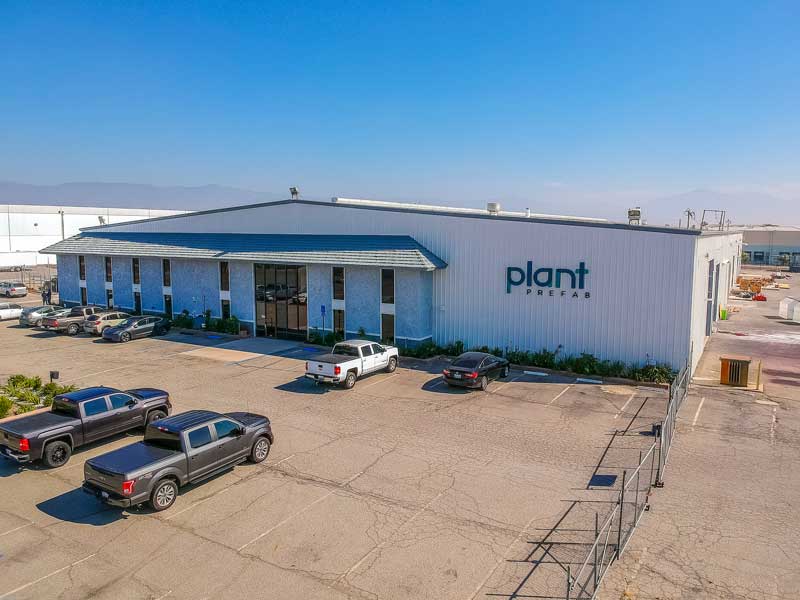
Steady labor, steady weather, less waste and faster turnaround
The advantages of modular construction are, at this point, well testified to. The plant in Rialto employs a few dozen full-time workers. The employees get paid a living wage for the area because the plant’s located outside of high-cost LA, which is beneficial for both parties. Plant Prefab can then pass those savings onto customers and its bottom line.
Another aspect of modular construction that makes the technique so attractive is weather predictability. Weather delays are a headache for contractors. On larger projects, they may be fined thousands of dollars for every day they’re late with delivery; often, if they claim delays due to weather, they’d better be prepared to prove it by capturing and storing data that attests to unfavorable conditions. Building indoors eliminates that issue.
Glenn can rely on a steady workforce, the workers can rely on a steady paycheck, and nobody has to rely on the weather. These factors lead to quicker build time, and in a world where climate-induced natural disasters are increasing in frequency and intensity, there’s a growing need for quick housing. In some parts of Northern California devastated by the wildfires of 2017, for example, there are many general contractors who still have year-long backlogs. Modular construction can help ameliorate that housing shortage. And subcontractors can do the on-site work such as moving dirt and laying utilities at the same time that the house is being built in a factory, cutting total build time in half, in many cases.

Building for a better planet
Glenn didn’t just set out to create a better building process. He’s also passionate about reducing the impact of home construction on the planet. The modular building process minimizes construction waste. Material calculations are more accurate; there’s less on-site losses due to spoilage and breakage, and it’s easy to transfer leftover materials from one job to the next. There’s no need to haul it to a new site, just drag it over to a different spot on the factory floor. Building materials are chosen from sustainable sources, and one of the uses Glenn foresees for the modular homes is urban infill, which will ultimately help reduce sprawl.
Custom design, high style
In early November, the company announced a partnership with renowned Swiss designer Yves Béhar, whose work is featured in museums around the world and who has collaborated with such brands as Herman Miller, Movado, Samsung and Prada. Béhar’s home combines cutting-edge technology with a luxury design sensibility and signals a brave foray into uncharted territory for the modular sector.




